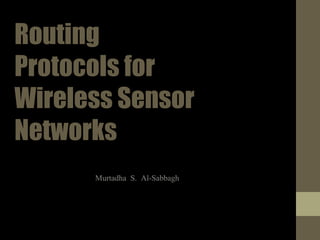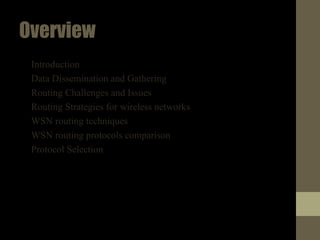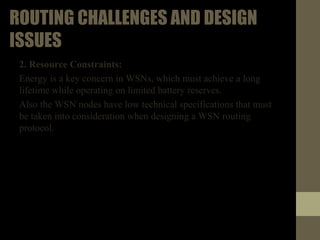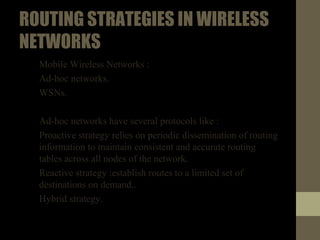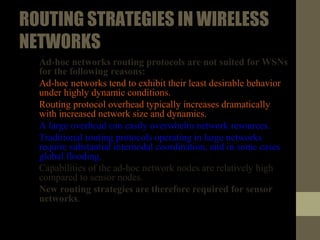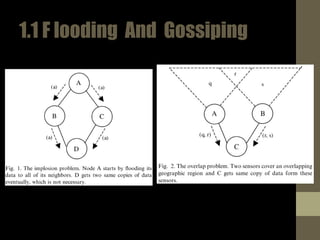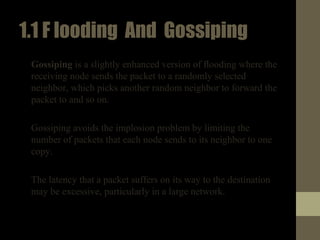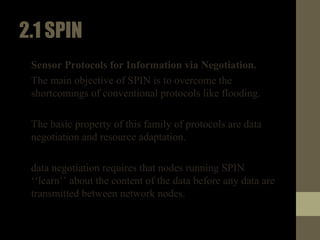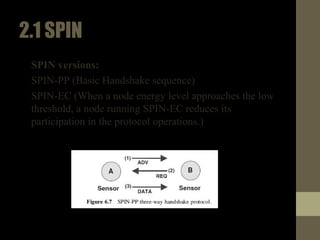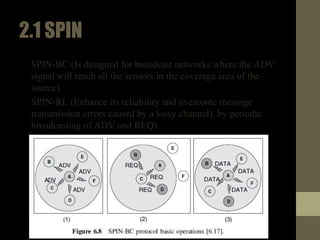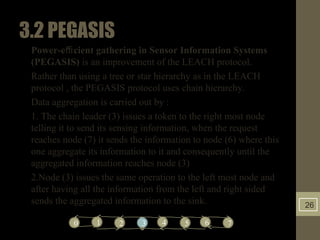Routing protocols are essential for wireless sensor networks to efficiently transmit collected sensor data to data sinks. The document discusses several challenges in designing routing protocols for wireless sensor networks and surveys different routing techniques including flat, hierarchical, and geographic routing. It provides LEACH and PEGASIS as examples of hierarchical routing protocols that use clustering and data aggregation to reduce energy consumption.
